Thursday, August 20. 2015
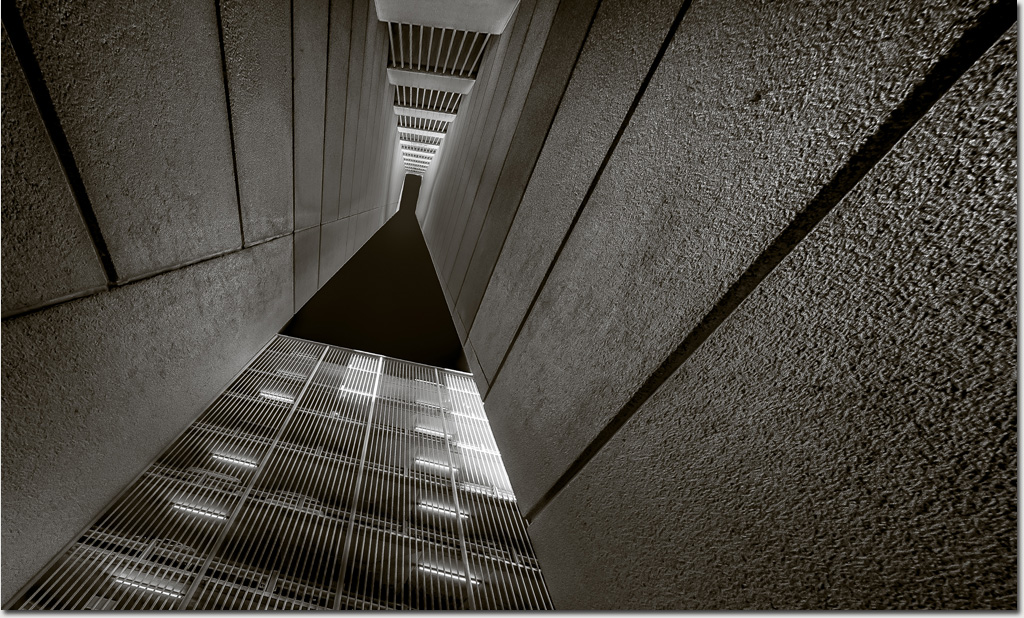
As I go about my business at the bottom of these arcane structures I can't but help feel a sense of being trapped down here.
During the day there may be blue skies or clouds. At night stars or nothing at all.
There is no light above this rabbit hole. Freedom lies in a torturous horizontal path.
Photo: Robert Rath, 'No Light Above This Rabbit Hole' 1/50s f/11 ISO320 15mm
Wednesday, August 19. 2015
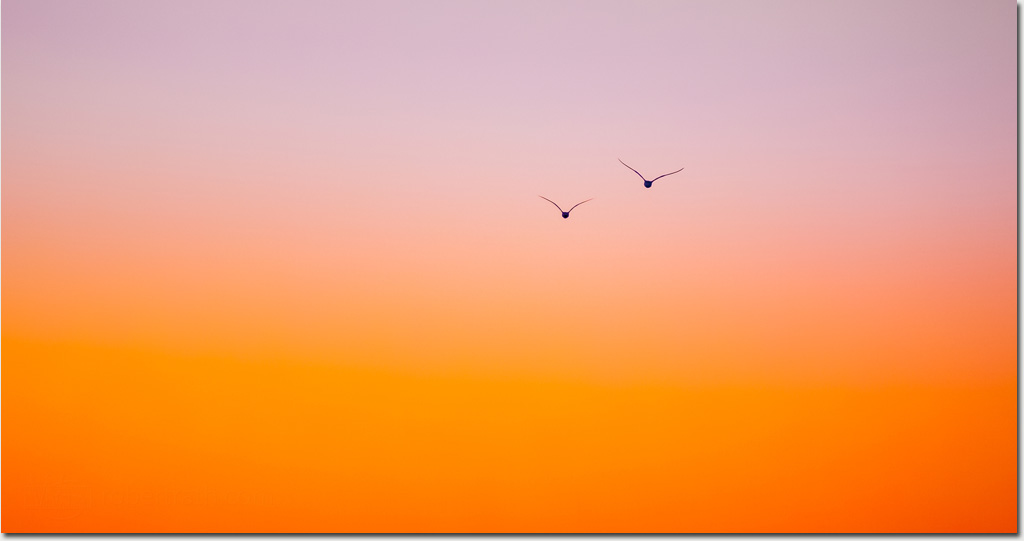
The sun is gone and twilight hues paint the sky through the colours of the rainbow. Night is coming and these glorious changing colours will last only a little while.
Perhaps if we fly as fast as we can that colour will never leave so let the two of us fly off into an amber sky and see where it leads.
Photo: Robert Rath, 'The Two of Us' 1/500s f/2.8 ISO320 200mm
Tuesday, August 18. 2015
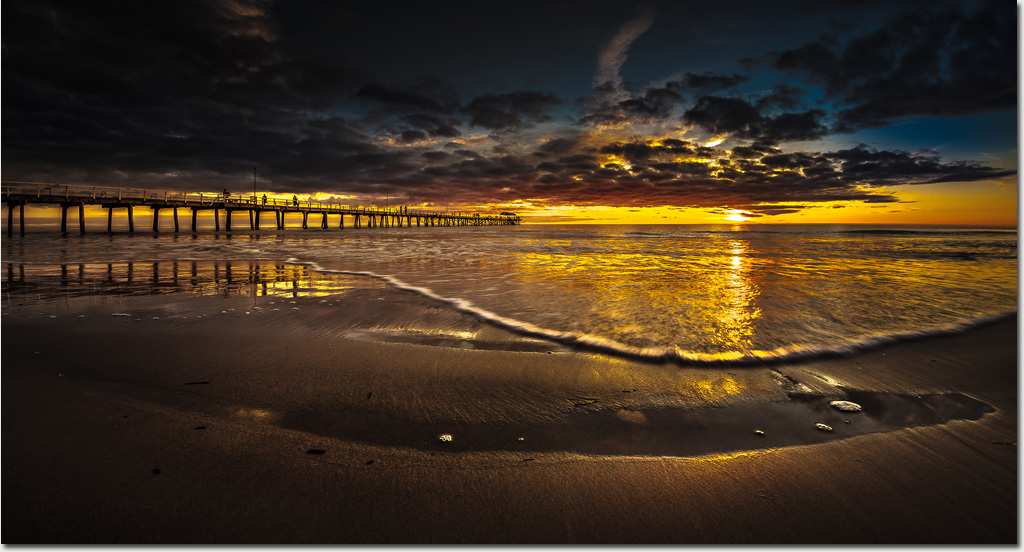
The days are getting longer now and the sun setting a little later which means more time in the evening to get down to the beach.
There are more people out walking, more people out running and more people just hanging around on the jetty enjoying the evening.
Even though winter is not quite over and we have all of spring to enjoy most are really waiting for summer.
Photo: Robert Rath, 'Waiting for Summer' 1/15s f/14 ISO100 15mm
Monday, August 17. 2015
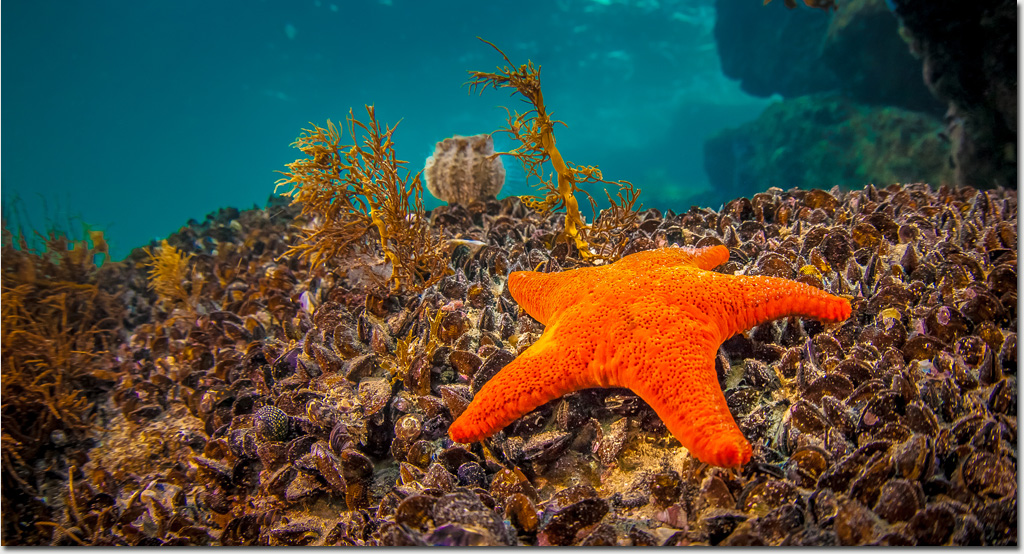
The way this teddybear star ( Anthenea australiae) has latched onto that bed of mussels has a kind of possession quality. It's as if she's saying 'Hands off,... My mussels!'
No sooner had I uttered that phrase and I was whisked away into a Sydney dentists office and to his the characters in his marine aquarium. 'Bubbles' might have had the fascination for bubbles but I can just as easily imagine the starfish 'Peach' being equally possessive of her mussels.
... clearly I have been out of the ocean too long!
Photo: Robert Rath, 'My Mussels' 1/40s f/7.1 ISO800 15mm
Sunday, August 16. 2015
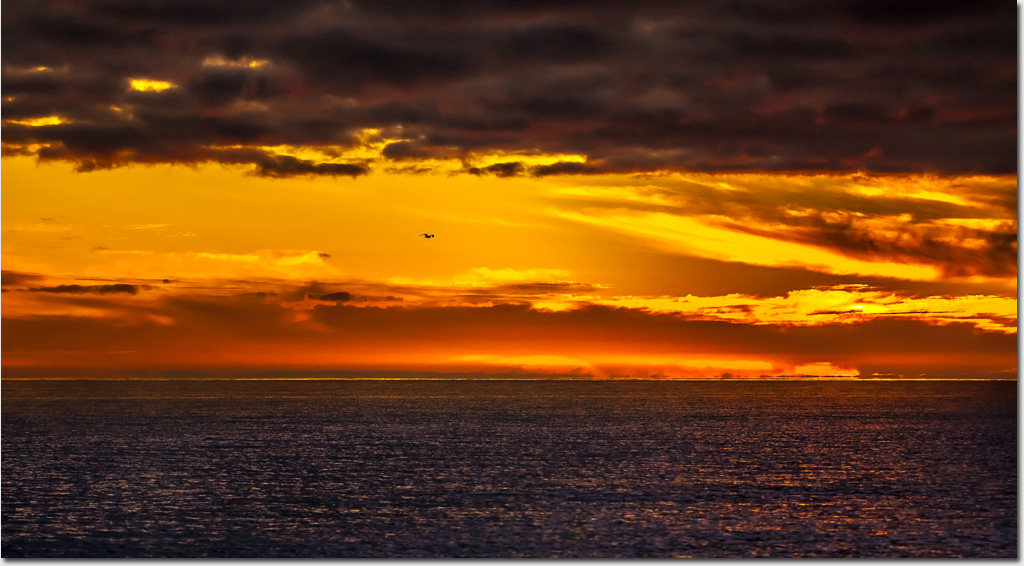
As the sun dipped below the horizon it kindled a fiery twilight. Orange and red embers flicker in the clouds, birds took flight and for a short while the world was bathed in firelight.
Photo: Robert Rath, 'Fire Light' 1/5000s f/2.8 ISO320 95mm
Saturday, August 15. 2015
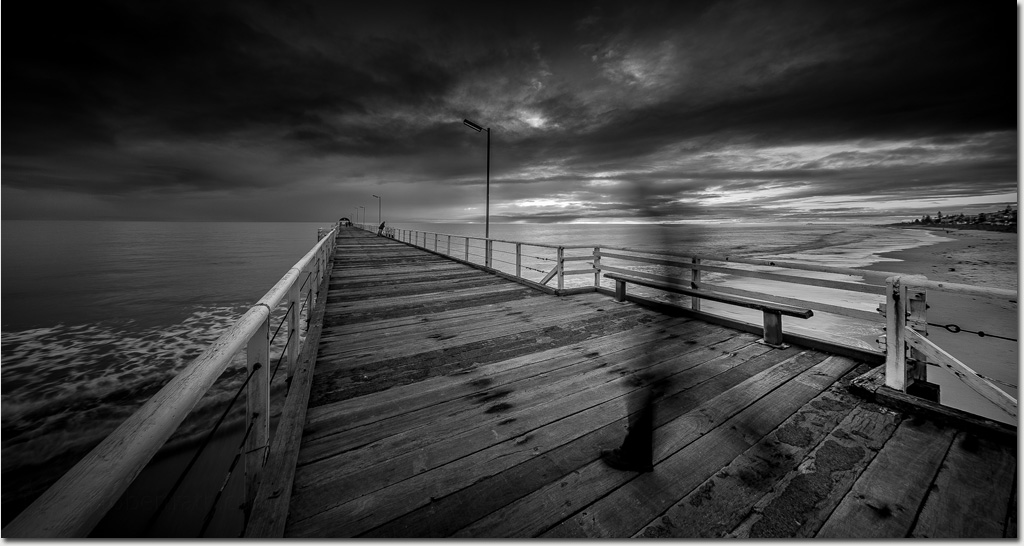
Perception of the world is so intimately bound with time that things that happen outside of normal time perception go unseen, unnoticed.
For thing that happen slowly like trees growing in the garden or large constructions sites this is obvious. What happens though when perception of time is slowed down?
As time slows people going about their business become fuzzy and blurred. Slow it down further and they become like wispy ghosts. Eventually they are gone completely.
Photo: Robert Rath, 'Nobody Saw Him Leave' 0.3s f/14 ISO100 15mm
Friday, August 14. 2015
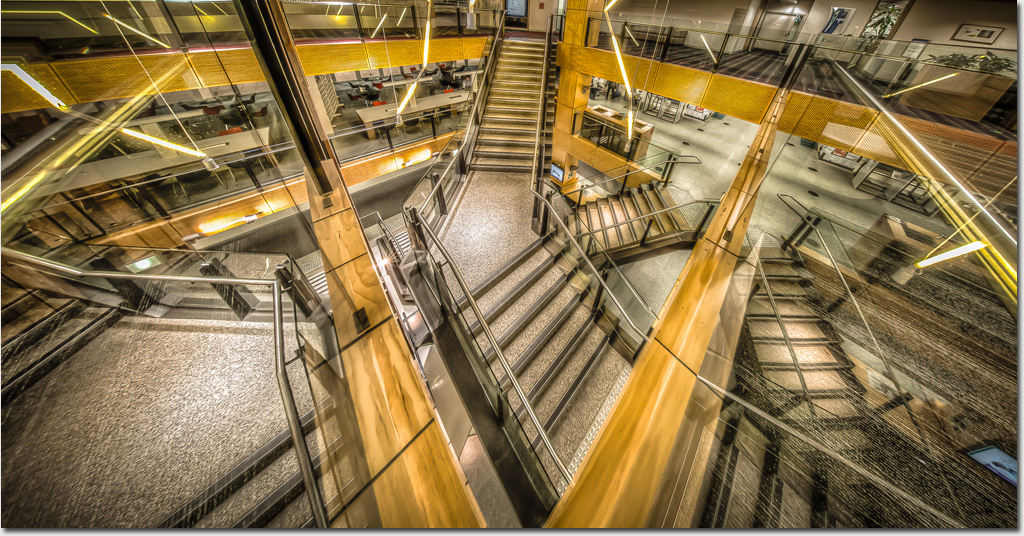
This atrium of stairs in Adelaide University's Ingkarni Wardli building is an open invitation to explore.
Either exploring up or down I still wondered which way?
In the end I had to leave this Escherian space and take the elevator.
Photo: Robert Rath, 'Which Way?' 1/2s f/16 ISO800 15mm
Thursday, August 13. 2015
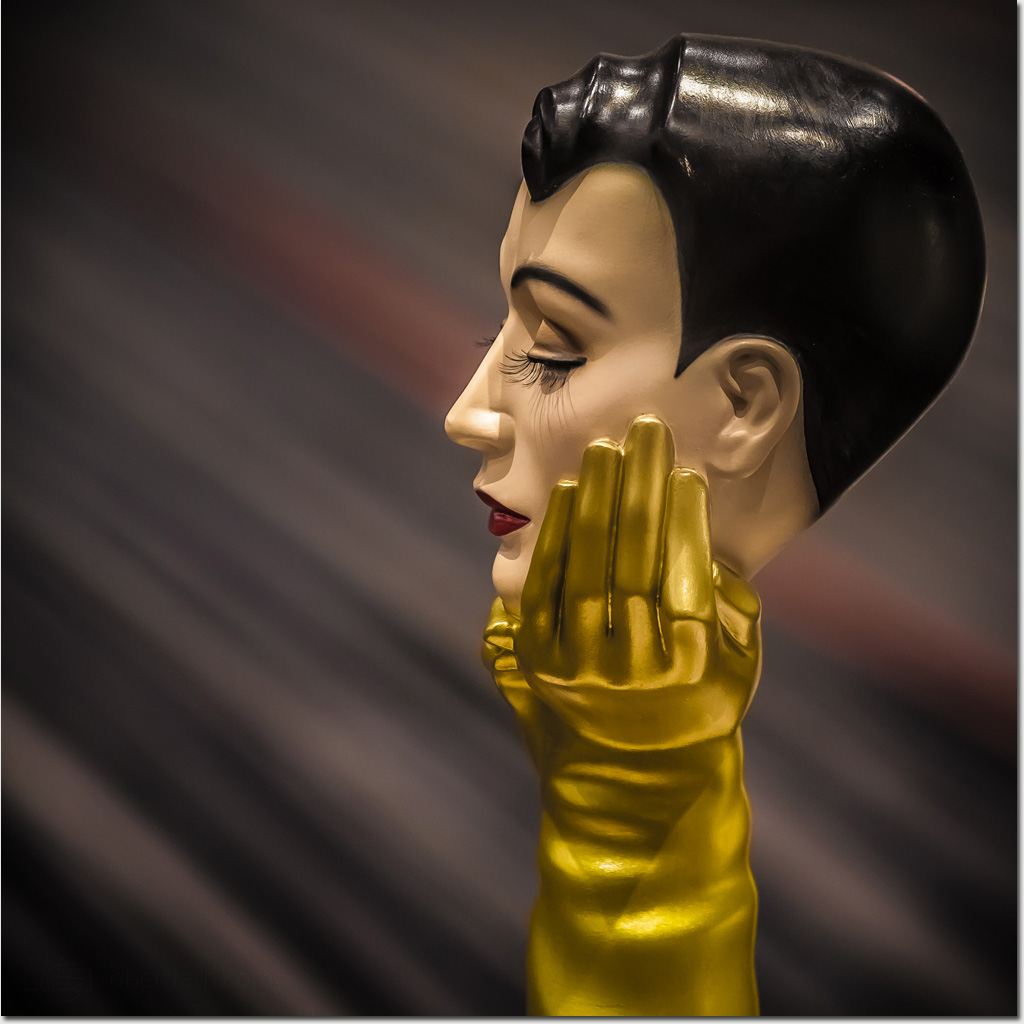
Nina Ventura's art might not be for everyone but if you are into mannequins and you are a local then you should see her exhibition at the Adelaide Convention Centre while it's running.
I personally found this piece quite disturbing, like an out of body experience gone terribly wrong yet I could not keep myself from coming back to it and capturing it in my own way .
Photo: Robert Rath, 'An Out of Body Experience' 1/125 f/2.8 ISO800 200mm
Wednesday, August 12. 2015
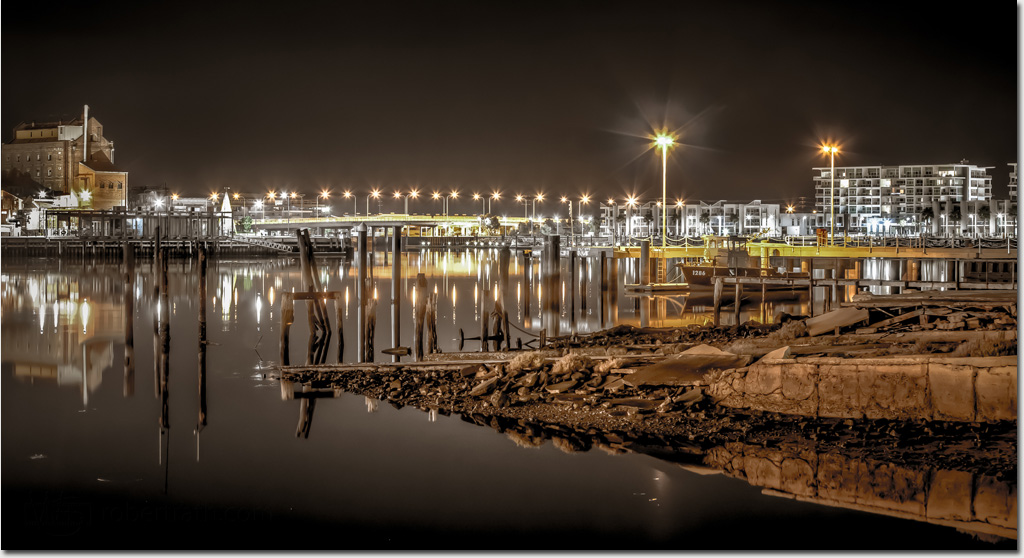
A breathless evening on the Port River is full of image opportunities.
In all of that waterscape the lack of boats has not gone unnoticed. Except for 1286.
Photo: Robert Rath, '1286' 30s f/7.1 ISO640 70mm
Tuesday, August 11. 2015
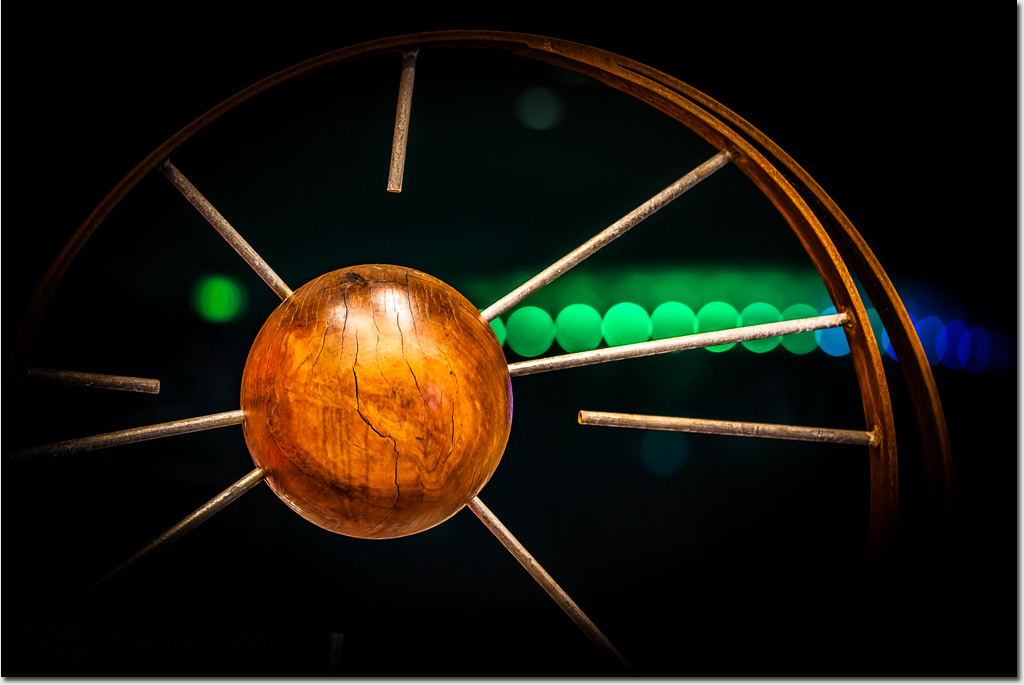
Steven Griguol works with wood and steel to create beautiful objects.
I have come across Steve's work for the first time at this year's SALA Festival. This image is part of a small collection he has on display in the foyer of the Adelaide Convention and Exhibition Center.
I honestly feel uncomfortable showing images I make of others art. Mainly because, well it's theirs, not mine and partly because the original artist might be offended by my vision.
I guess we will both learn to get over it!
Photo: Robert Rath, 'Of Wood and Steel' 1/25s f/2.8 ISO1600 130mm
Monday, August 10. 2015
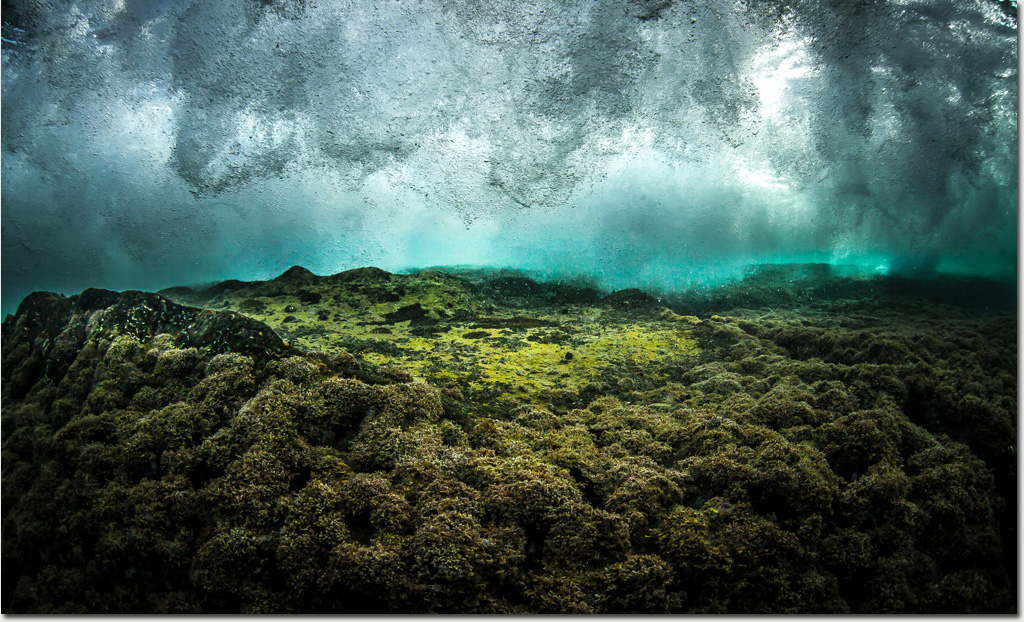
Saturday we took to the water again. Somewhere local this time, Port Noarlunga Reef.
I've sung the praises of this dive site, so close to most Adelaide divers, on many occasions. Many people regard Port Noarlunga as a training location and as such we are very fortunate to have such a protected and accessible site. But this place has a few surprises for those adventurous enough to explore a little out of their comfort zone.
While my dive buddy Andy christened his new GoPro I decided to spend a while in the impact zone, three feet of water breaking over the reef. How I wished I was holding a GoPro and not wrestling with my beast. Next time I do this I will be taking the strobe arms off!
I love this part of the reef when the tide is high for the interesting life here that survives cycle after cycle of being baked dry during low tide and then brought back to life again. Every now and then a huge school of silver drummer will swarm over the reef in excitement chasing morsels unlucky enough to get kicked of the reef and into the churning water with the crashing waves.
Photo: Robert Rath, 'Impact Zone' 1/1000s f/13 ISO800 15mm
Sunday, August 9. 2015
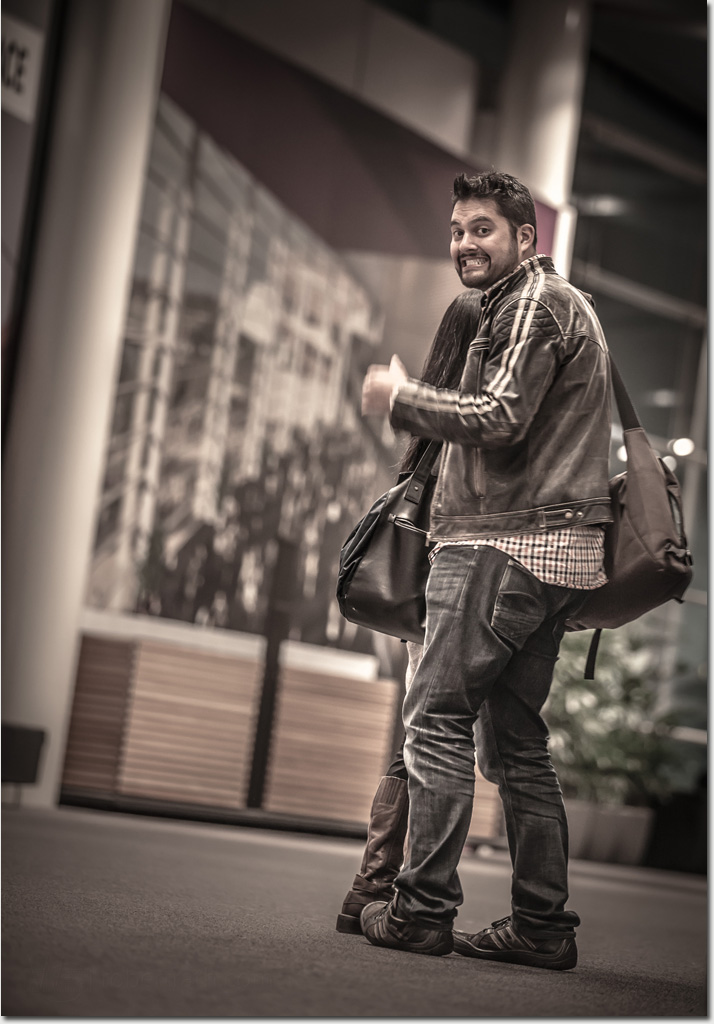
Last week I attended the opening night of the South Australian AIPP (Australian Institute of Professional Photographers) Awards Exhibition 2015, part of the SALA (South Australian Living Arts) Festival.
It was fantastic to see all of the images in print, on real old fashion honest-to-goodness paper.
All of this years award winners and their images can be found here at http://www.stateawards.aippblog.com/index.php/2015-epson-aipp-sa-professional-photography-awards/
Benjamin Liew won the Travel Photographer of the Year category. Nice work Ben.
Photo: Robert Rath, 'Benjamin' 1/60s f/2.8 ISO1600 142mm
Tuesday, August 4. 2015
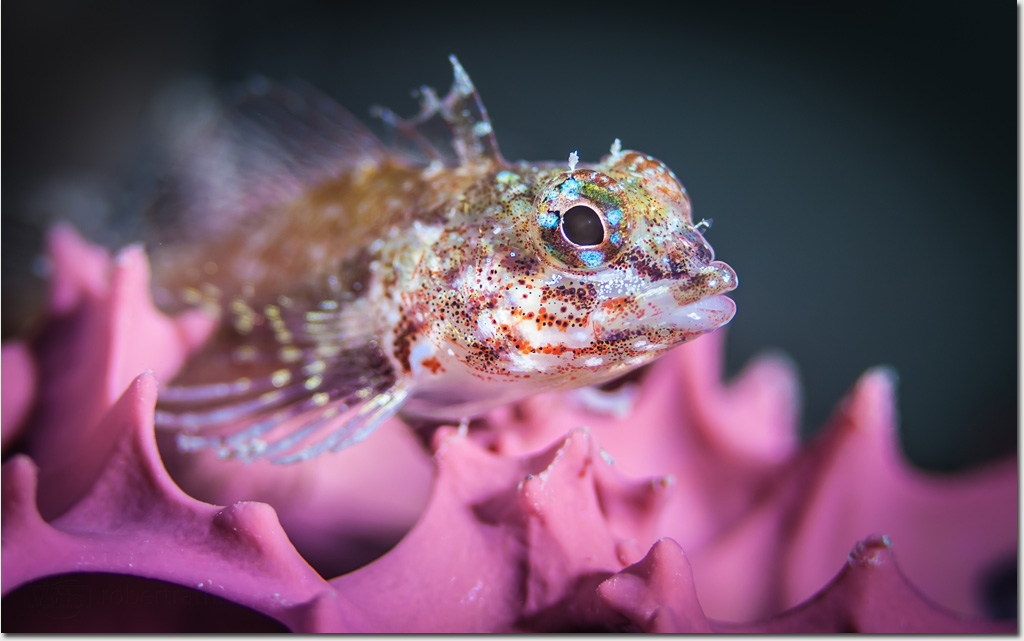
I love the lips on this girl hence the name Angelina just came to me.
Castelnau's Goby, Nesogobius pulchellus, is not normally known for great lips but you have to admit she is a cutie!
Photo: Robert Rath, 'Angelina Gobie' 1/200s f/18 ISO100 100mm
Monday, August 3. 2015
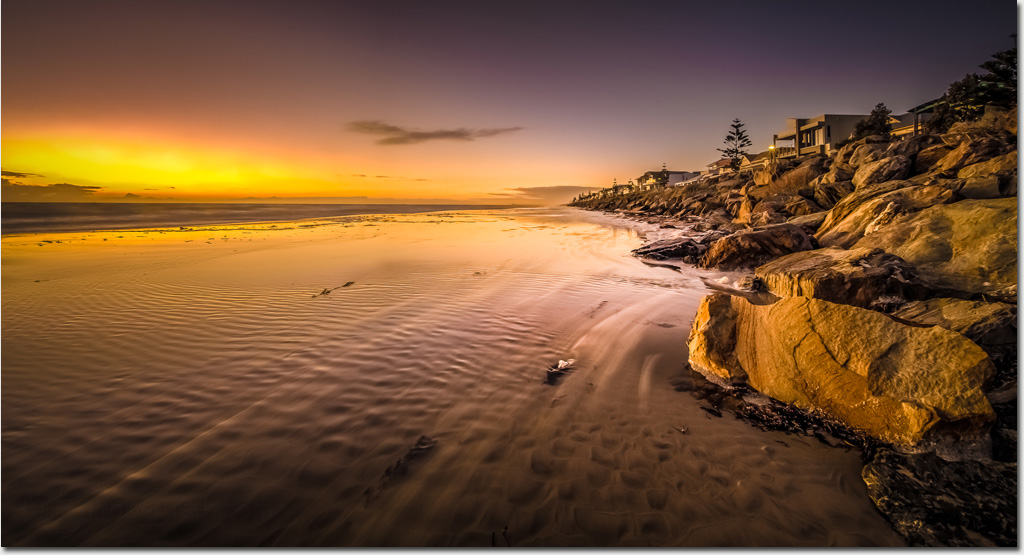
It might be the middle of winter but last night's sunset at Henley Beach had all that golden warmth of a summer evening.
That imagined warmth did not last long though as the sky faded through turquoise to violet and then to darkness leaving an inky black ocean with a chill onshore wind.
Photo: Robert Rath, 'Northern Flow' 1.3 f/16 ISO100 15mm
Sunday, August 2. 2015
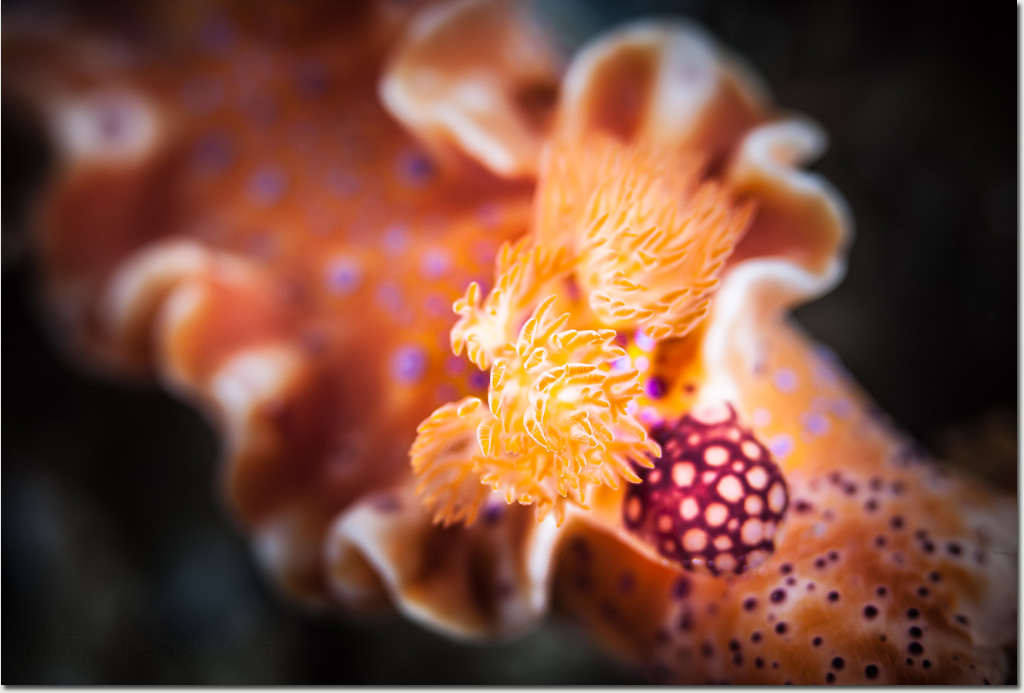
Our most common nudibranch (sea slug) Ceratosoma brevicaudatum is a beautiful creature. It is very hard to capture all of its detail in a single image due to its size and the depth of field challenges of macro imaging.
This rear view end shows the detail and complexity of its branchial plume, the organ it uses to breathe with.
Photo: Robert Rath, 'Branchial Fire' 1/200 f/29 ISO100 100mm
Saturday, August 1. 2015
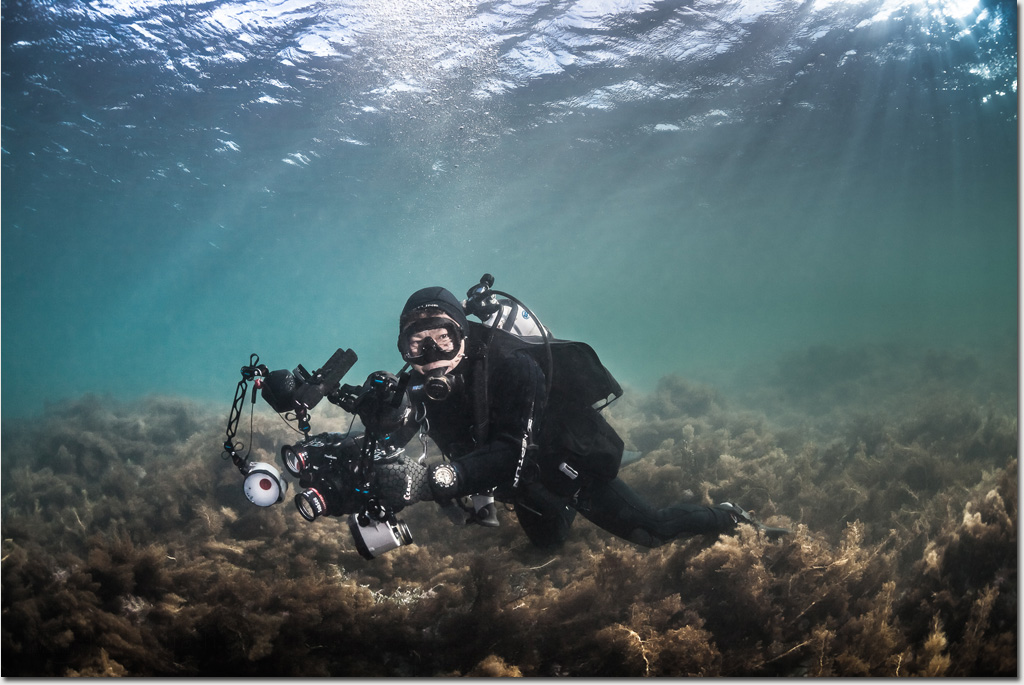
Fishery Beach at the very bottom of the Fleurieu Peninsula faces south west onto Backstairs Passage, one of the most perilous waterways in Australia.
If it's not the 4 knot currents or claptopic seas then it's the men in grey suits who prowl beneath the surface that make this part of our coastline unique.
But sometimes, just sometimes, it's OK to dive here.
Photo: Robert Rath, 'Cruisin Through Algae ' 1/250 f/9 ISO250 15mm
Friday, July 31. 2015

A pale blue sky, whimsical clouds, a grey horizon and flat water and a long white jetty out to sea made for perfect diving at Port Hughes.
Photo: Robert Rath, 'Nice Day for A White Jetty' 1/100s f/11 ISO100 17mm
Thursday, July 30. 2015
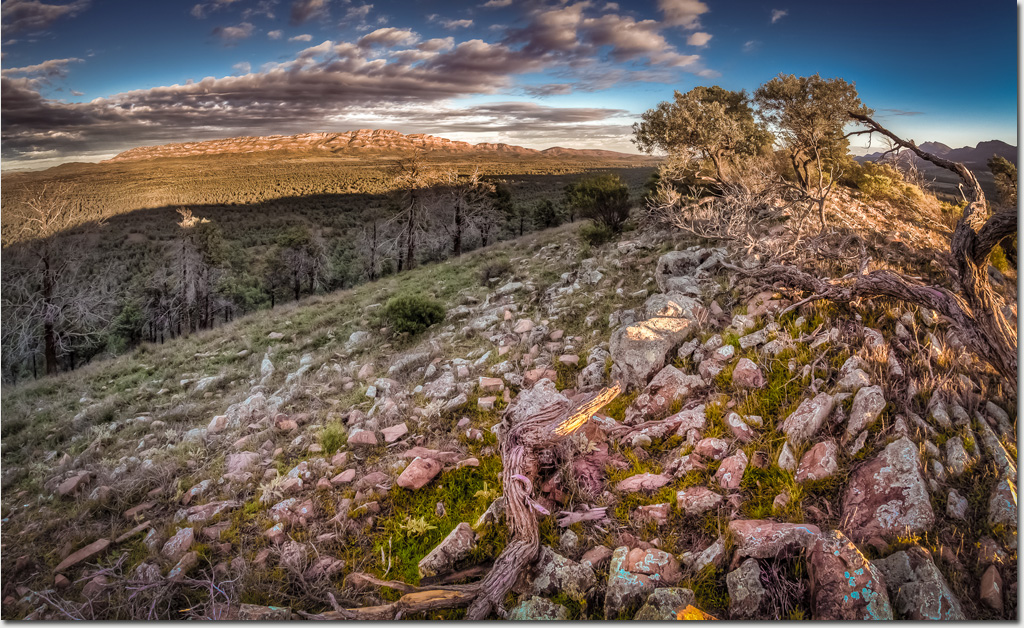
As the sun rose behind me a great shadow raced down from the distant ridge-top of the Elder Range.
It was breathtaking the speed it moved but that was nothing to compared to the way it raced away from the base towards me across the eucalyptus and native pine scrub below.
As the shadow got nearer it began to slow to a crawl while the storm clouds in the west gathered and followed in pursuit.
Photo: Robert Rath, 'An Elder Morning' 1/10s f/16 ISO100 15mm
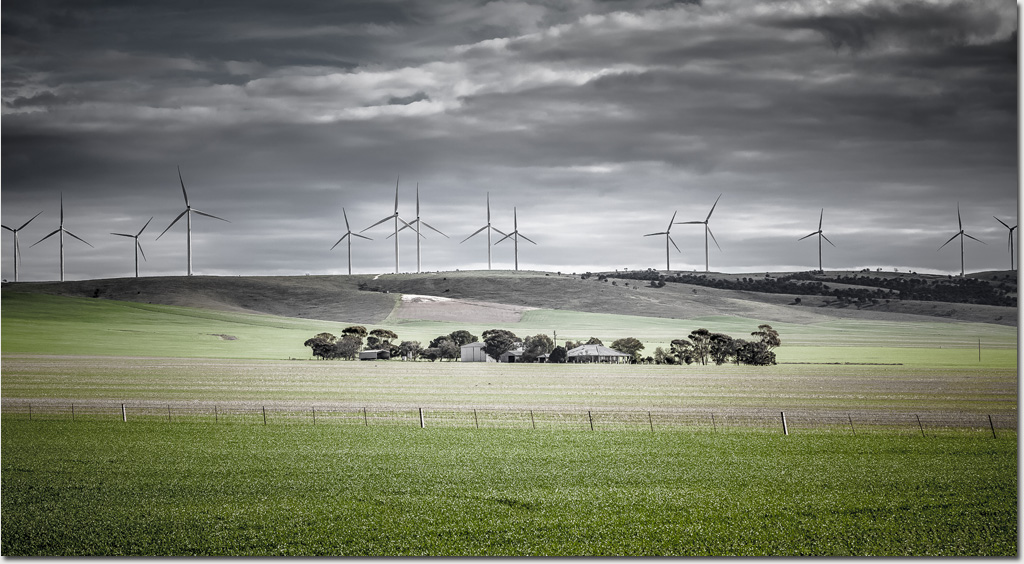
There is so much controversy, misdirection and plain old fallacy about the ill affects of wind generated power.
Some people complain of sleepless nights, nausea, headaches and a loss of general well-being if a power generating turbine is part of their visual landscape.
Funny how those people with turbines on their own land and who collect a tidy rent seemed to sleep perfectly sound and no ill health is anywhere to be seen.
Perhaps if the naysayers got the exhaust from their preferred coal powered electricity pumped through their homes they would feel differently about sleeping with the real enemy.
Photo: Robert Rath, 'Sleeping With The Enemy' 1/500s f/10 ISO320 105mm
Tuesday, July 28. 2015
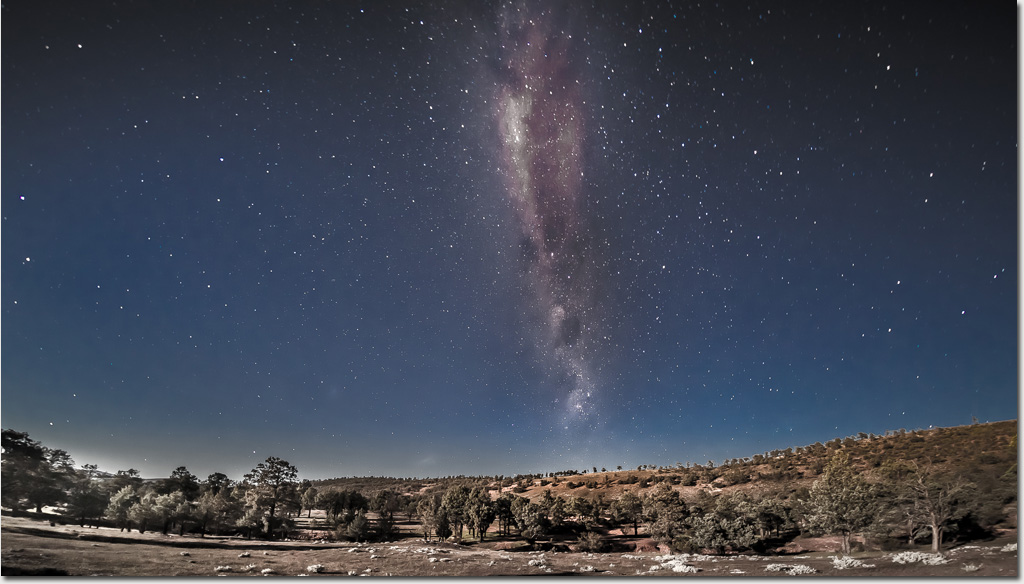
Up here in the Flinders Ranges the winter night sky is so dark that even a moonlit landscape can't wash away the spectacle of the Milky Way Galaxy.
Even the distant galaxies LMC and SMC can clearly be seen just above the ridge-top to the left of the scene as fuzzy cottontball blobs.
All this captured in a simple single 60 second image just makes me want to go back for more.
Photo: Robert Rath, 'Under a Southern Winter Sky' 60s f/2.8 ISO1600 15mm
Sunday, July 26. 2015
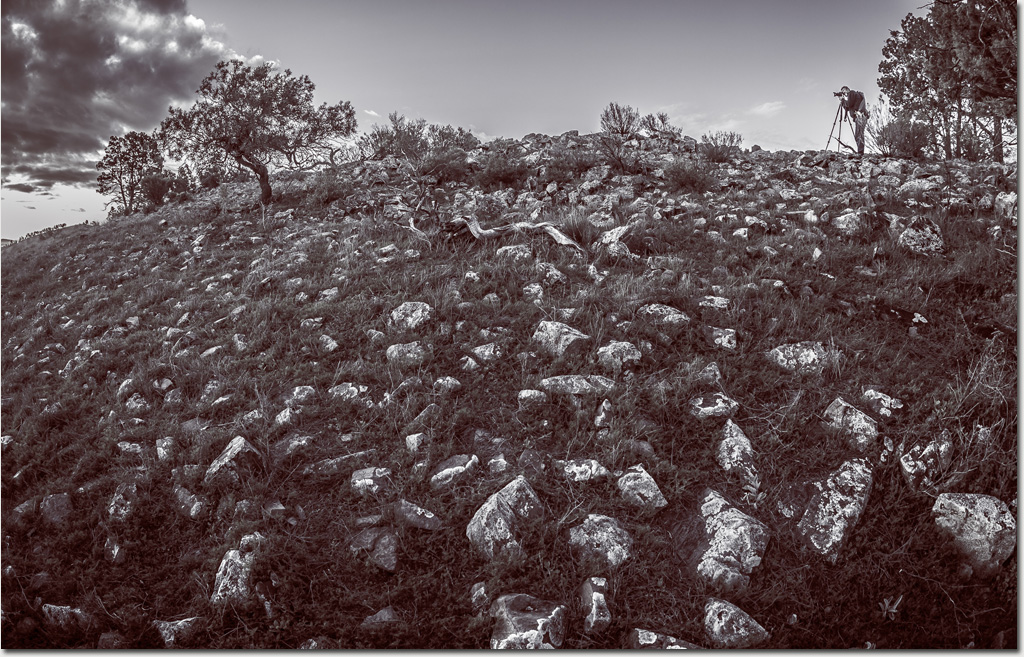
It's nice being able to share an experience of being somewhere wild and out of the way. That is why good landscape images are so compelling.
It's also fun to share the actual experience of being there with friends. This image is proof that Gavin actually did make it to the top in time to enjoy some of that Flinders Ranges sunset goodness from up high.
Photo: Robert Rath, 'Out in the Wild' 1/80s f/8 ISO160 15mm
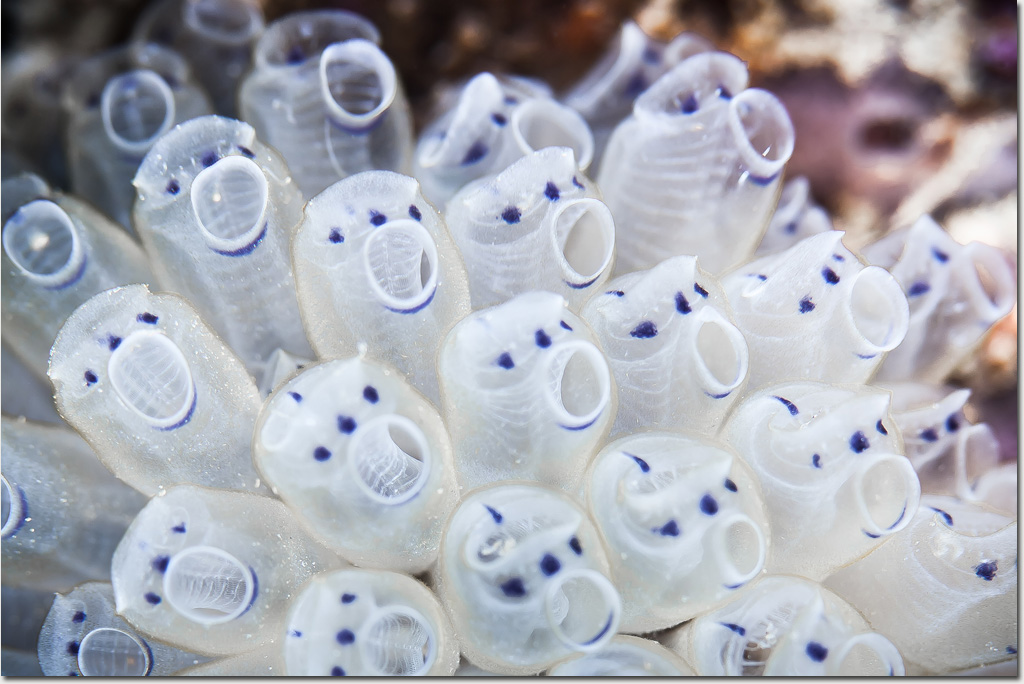
These little critters are Blue Throat Ascidians ( Clavelina australis) and live in compound clusters.
They look like a nest of little chicks of some bizarre bird with mouths agape chirping for food.
Actually just like birds these critters are chordates and though they don't really have a backbone they do have long nerve running the length of their body making for a rudimentary spinal cord.
Photo: Robert Rath, 'Mouths Agape' 1/200s f/18 ISO100 100mm
Saturday, July 25. 2015
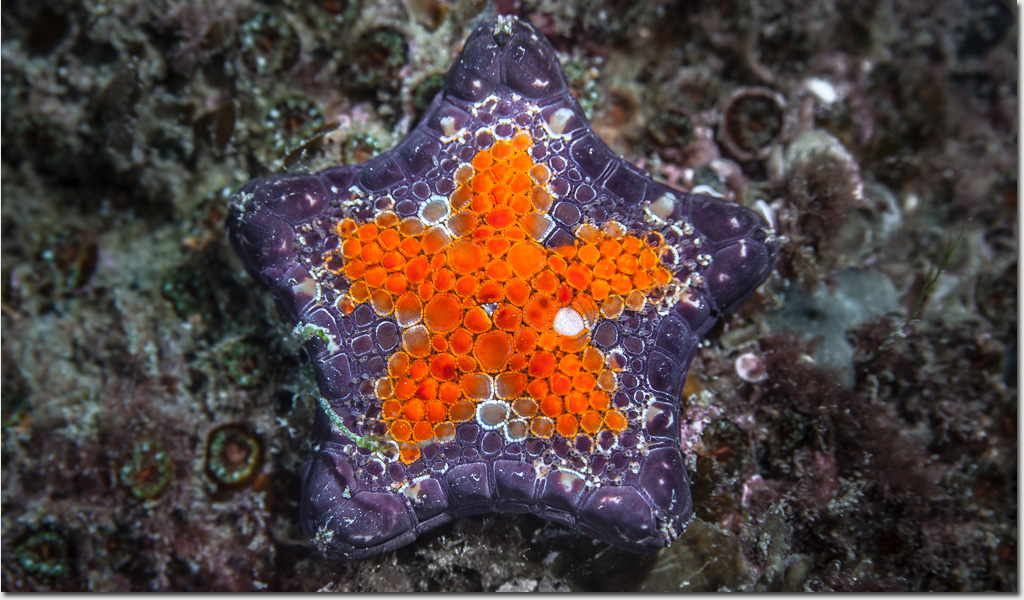
Biscuit Stars, Tosia australis, come in all sorts of colour variations.
This beautiful purple star under Rapid Bay Jetty reminded me of a gingerbread man with its striking orange internal markings.
Sea stars are not perhaps the most exciting of undersea critters and are often overlooked by divers who miss out on their intricate beauty.
Photo: Robert Rath, 'Gingerbread Man' 1/200s f/18 ISO100 100mm
Monday, July 20. 2015
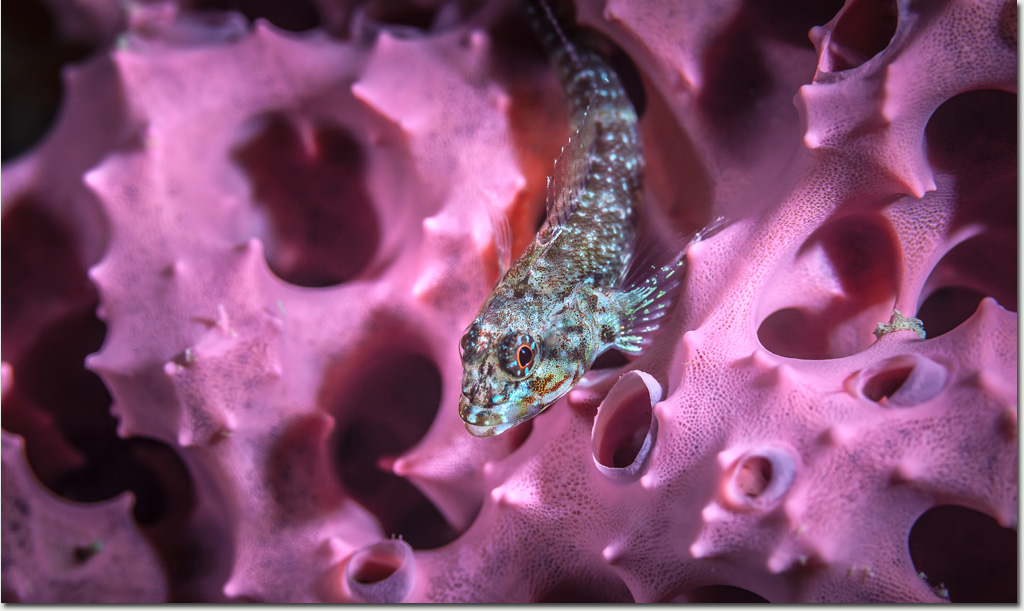
Nestled inside a pocket of alien pink landscape is a Castelnau's Goby, Nesogobius pulchellus
Like all gobies this one is cute, curious and you can almost imagine it wanting to startup a conversation.
Make a sudden move though and in the blink of an eye there will only be an empty pink grotto.
Photo: Robert Rath, 'Pink Grotto' 1/200s f/18 ISO100 100mm
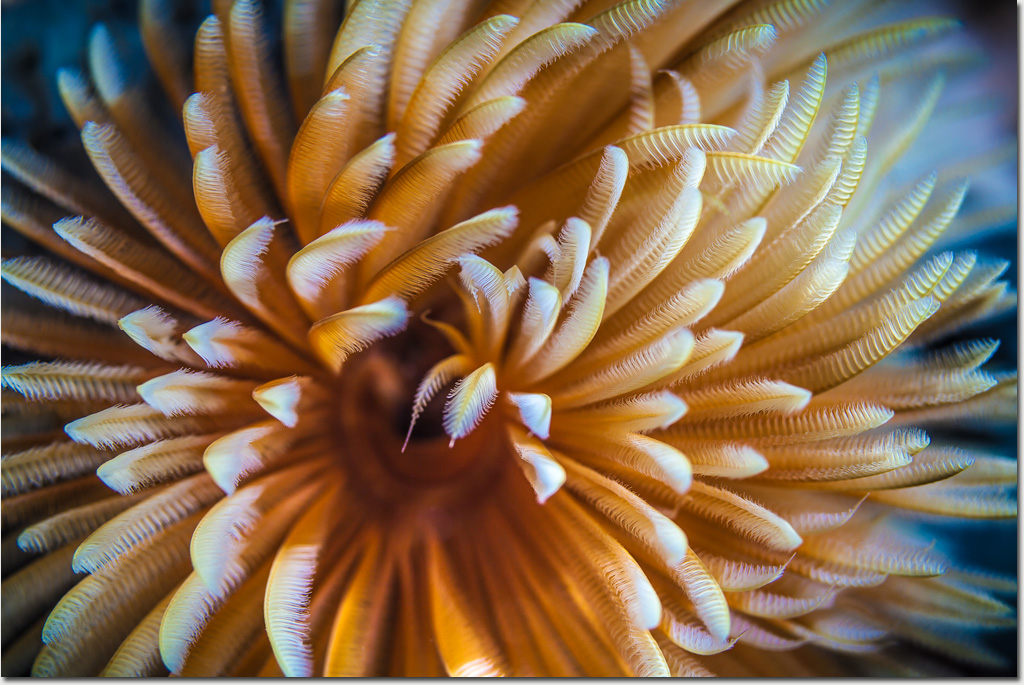
This feathery looking thing is actually a worm. It's a Southern fan worm Sabellastarte australiensis
Sometimes they are even called Feather Duster Worms and just like its cleaner namesake those appendages sweep the water clean hoping to find nutrition in the suspended particles floating by.
Photo: Robert Rath, 'Feather Duster' 1/200s f/32 ISO100 100mm
Saturday, July 18. 2015
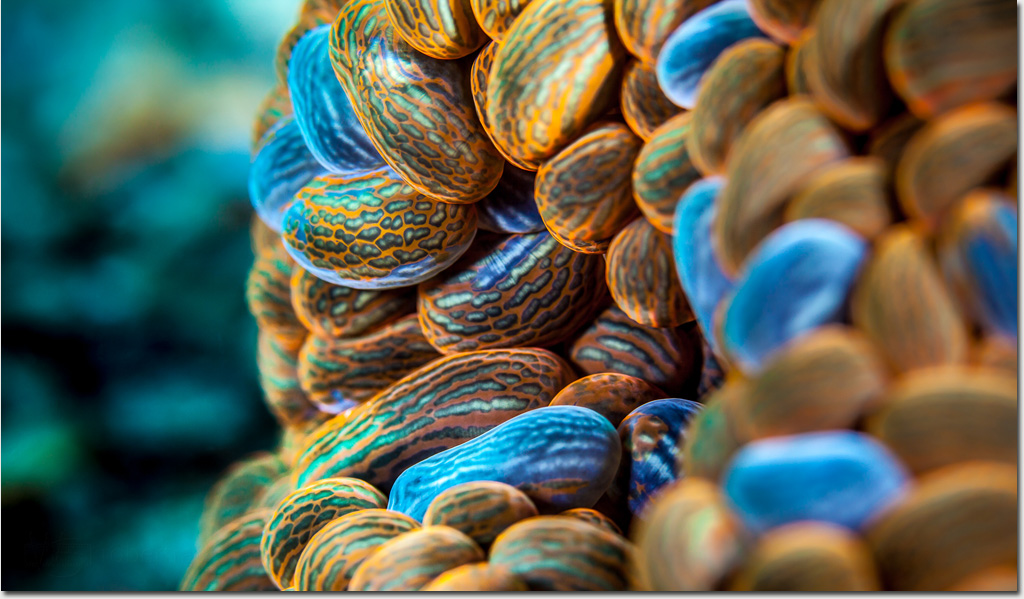
The conditions today at Rapid Bay were sensational with 15m visibility. I so wished I had set up for wide angle but today's dive was a macro gear shakedown.
Immediately on our decent we came across this beautiful Swimming anemone, Phlyctenactis tuberculosa. The fact that this macro image make it look like fluorescent coffee beans is purely coincidental.
Photo: Robert Rath, 'Swimming Anemone' 1/200s f/32 ISO100 100mm
Friday, July 17. 2015
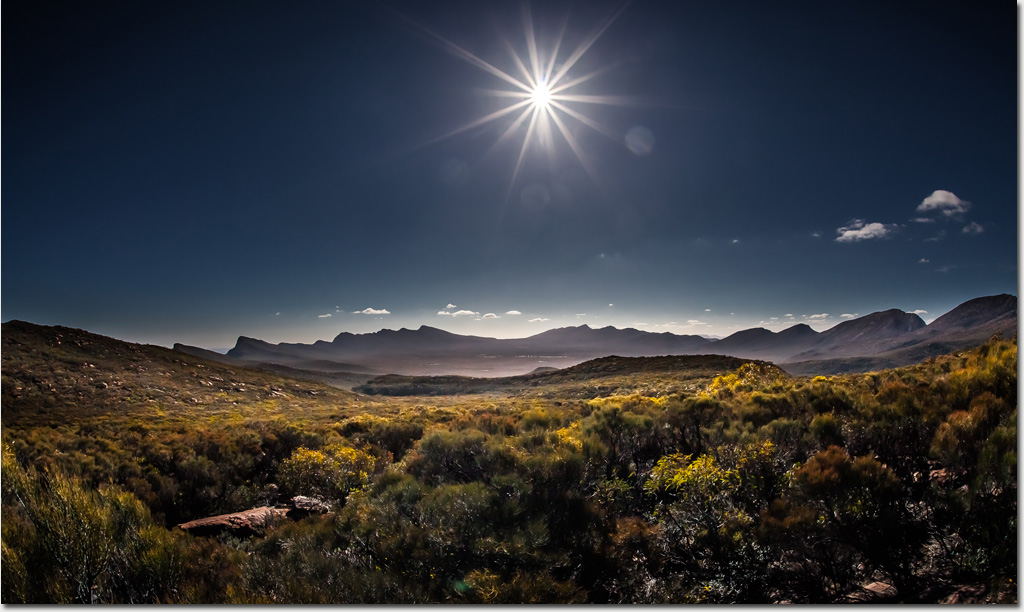
The beautiful Wilpena Pound is an ancient geological formation which looks like a giant crater and is something of a temperate oasis in the semi-arid Flinders Ranges.
Off in the distance what appears to be a gentle saddle separating left and right sides is the incredible Edeowie Gorge. The small triangular peak a little to the right is St Mary's Peak, the highest point in the Flinders Ranges. Our look out here is the southern pound wall with Rawnsleys Bluff behind us.
All of it under the spotlight of an outback Australian sun.
Photo: Robert Rath, 'Spotlight On the Pound' 1/2500s f/14 ISO400 15mm
Thursday, July 16. 2015
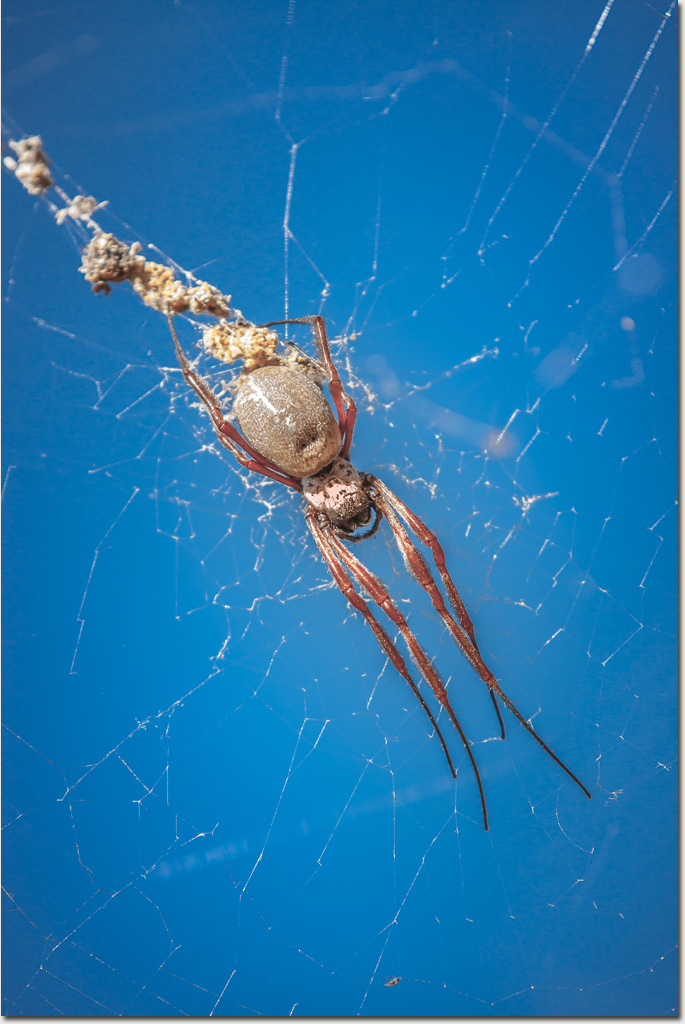
When I was thirteen years old I remember being on a walk in the Flinders Ranges and walking into a great big net spread between two trees. I also remember that it did not break and I had to extricated myself from it by walking out backwards. It was the web of a Golden Orb Weaver, Nephila edulis.
After the incident we looked all around but the web's owner was no where to be seen and I spent the rest of the day dreading she had stowed away in my pack and would seek retribution later. Fortunately that did not pass.
This time I saw her first high up in her web. With legs as long as my fingers and a body as big as my thumb she was awesome in her own arachnid way. This time I was happy to only interact with my camera and then leave her in peace.
Photo: Robert Rath, 'The Golden Orb Weaver' 1/250s f/4.5 ISO100 200mm
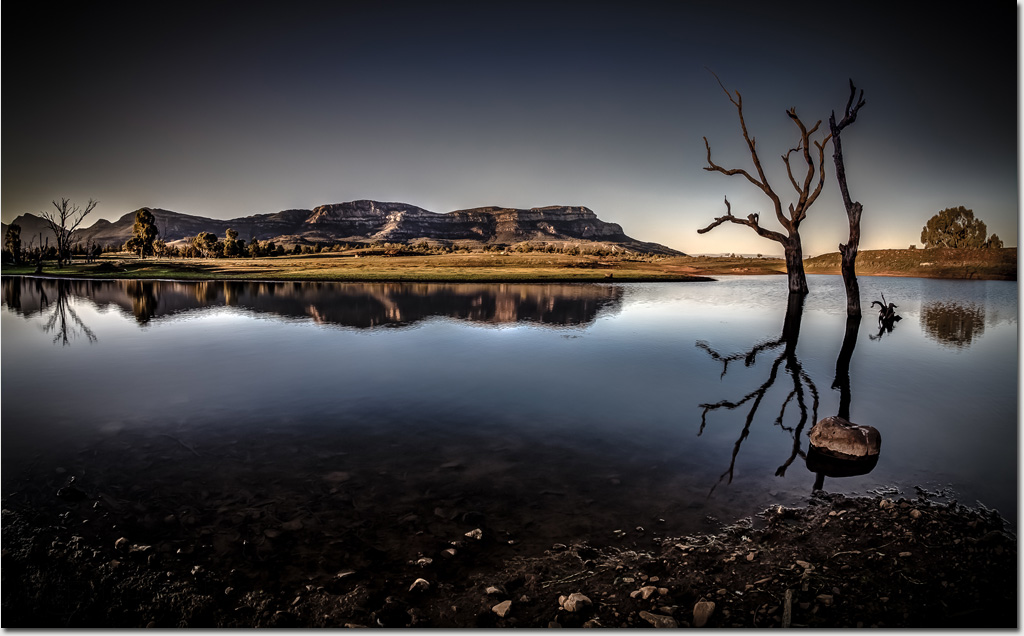
The southern wall of Wilpena Pound is fortified with the Rawnsley Bluff escarpment.
Anyone approaching the pound from the south gets to watch it rise larger and larger until it looms above them on their left as they make their way up the eastern side.
This region of South Australia is considered arid and only good for sparse livestock so a body of water like this within Rawnsley Park Station makes a beautiful counterpoint to the rugged semi-desert landscape.
Photo: Robert Rath, 'Rawnsley Reflection' 1/40s f/13 ISO10 15mm
Tuesday, July 14. 2015
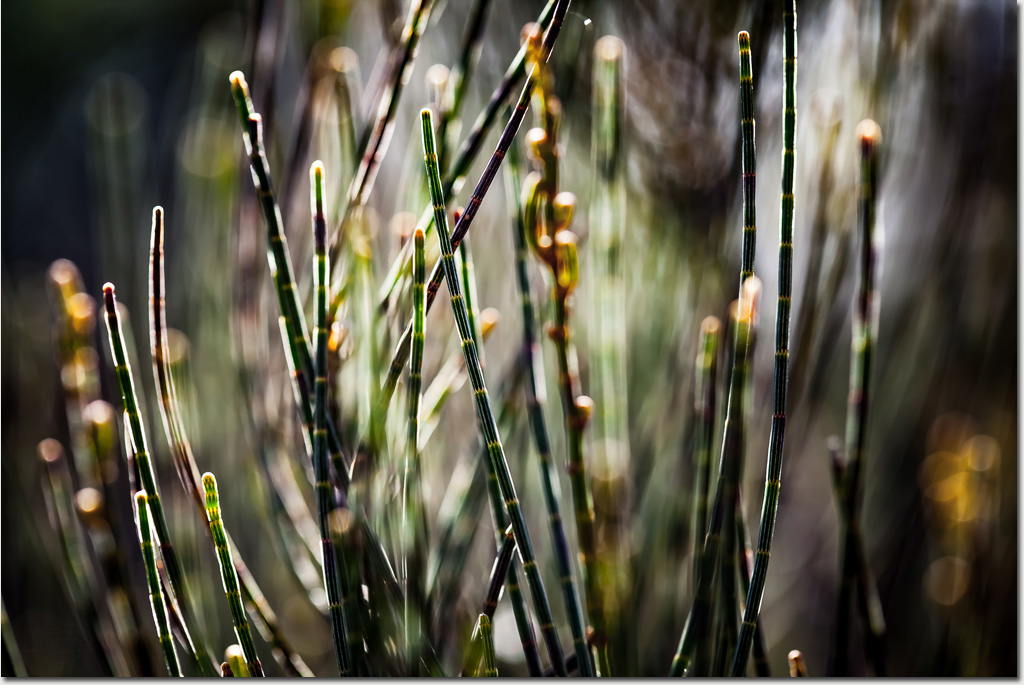
Arid region plants use all sort of tricks to remain hydrated for the months that separate quite often heavy downpours.
These beautiful crystalline structures are not blades of grass but leaves of small shrubby bushes.
Like pine needles the cylindrical tubular leaves seal in the water keeping the internal cellular workings in good shape through searing 45 degree summers ready to capture the water when it finally rains again.
Photo: Robert Rath, 'Crystal Grass' 0.3s f/16 ISO320 15mm
|